Hydroponic Nutrient Solution: A Complete Guide for Beginner Hydroponics

This post follows our research editorial guidelines.

Formulating the liquid nutrient blend for your hydroponic setup is like feeding a bunch of fussy house guests. You’ve got to get lots of different needs and preferences into place or you’ll get tantrums and miserable diners. Track a few important numbers and you can keep your rig chugging along no matter how picky those diners get. Water and nutrient solutions are more than just food – they’re the foundation of your plant’s biology and the key to helping them grow.
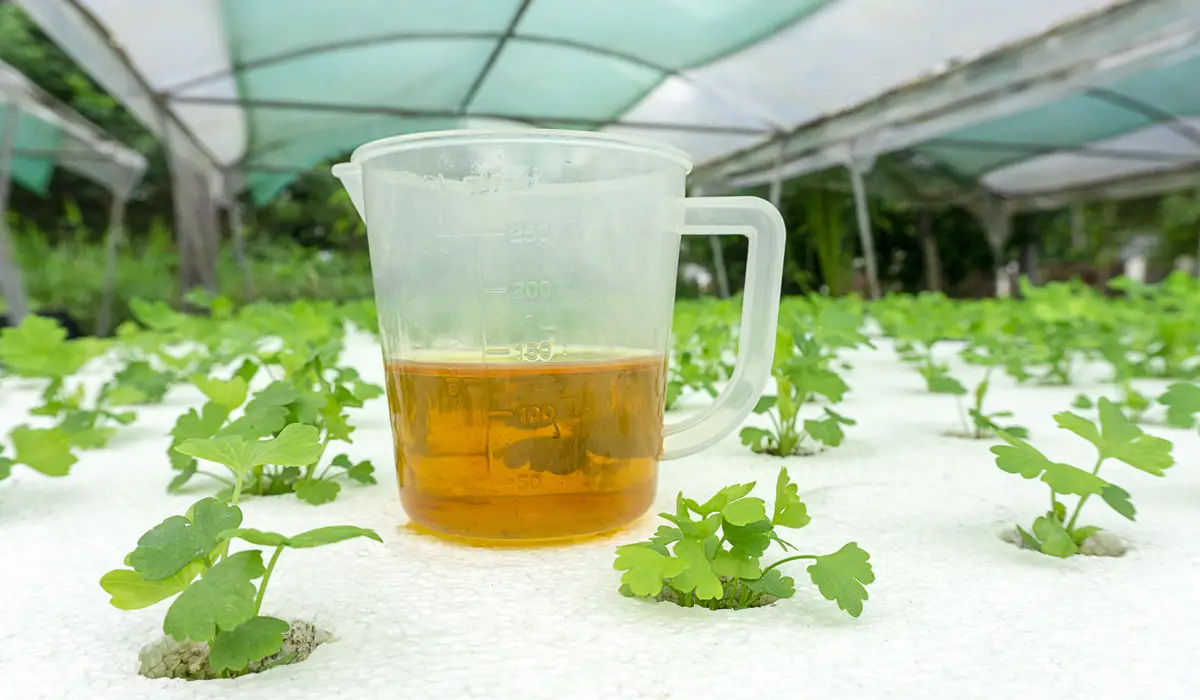
Table of Contents
What is Electrical Conductivity (EC) Of Hydroponic Nutrient Solution?
One way to understand what’s actually in a nutrient solution for hydroponic systems is to evaluate the electrical conductivity (EC for short). By passing zapping the liquid with a jolt of electricity and seeing how it behaves we can get an idea of how rich the solution actually is.
This is because the nutrients in a hydroponic solution are mineral salts. As the components dissolve they break down into electrically charged molecules. Their charge increases the ability of the liquid to conduct electricity. A concentrated nutrient solution with have a higher EC than plant water and can carry more current. The increased conductivity of the solution shows as a higher number.
For most hobby hydroponics the EC is measured as how much electricity the water carries across a gap of centimeters, given in milliSiemens. Clean tap water typically has an EC of between 0.8 and 1.5 mS/cm, for example, depending on your location. Sea water is more like 500!
“Plant nutrition is important to all gardeners, especially those growing crops hydroponically. Experimentation continues and researchers continue to learn new things about plant nutrition.”
Jeff Schalau, County Director, Agriculture & Natural Resources, Arizona Cooperative Extension
How Do You Calculate PPM When Preparing Nutrients Solutions?
Another way to track the richness of our solution is to measure the exact amount of nutrients we add to the water when we mix up our nutrient solution. Most commercial solutions tell you what it contains in Parts Per Million. This describes how many molecules of the good stuff are present in a million molecules of water. It’s easiest to track when the preparing the hydroponic nutrient solution for use, and is critical when blending your own.
One milligram of nutrient in one liter of water will give you one part per million. If your recipe calls for 150ppm of nitrogen, you’ll need to add 150mg per liter, or 0.02 ounces per gallon.
It’s more straightforward to work with metric measurements when you can. The units are smaller and can make the math significantly more straightforward. If you struggle with that, the University of Pennsylvania has a great article that explains working out ppm in Imperial with all the relevant conversions for my friends to the south.
It’s easiest to calculate the PPM when you mix from a commercial nutrient solution concentrate. They list instructions on how to correctly dilute the solution on the back of the pack. Using a premixed concentrate nutrient solution allows you to cut back on the math while still providing nutrients to hydroponic plants perfectly.
Things can get a bit hairier if you’re working from a recipe. Making up a solution from scratch can be very rewarding, but it’s a challenge. When it comes to nutrient solutions there’s little margin for error. That’s not so say it’s not worth it! There’s a few very reliable nutrient solution recipes out there, and it’s especially useful if you want to tailor the delivery of nutrients over time to promote fruiting.
To do so you’ll have to calculate each individual component, and be sure to do the calculations for each element you add as the nutrient solution is made. If you add a water soluble 16-4-8 fertilizer as your base you need to work out how many parts per million for the nitrogen, the phosphorus and the potassium in turn.
Don’t forget to take your water into account! Tap water carries its own load of mineral salts. If you’re mixing your own recipes use distilled water to ensure that your nutrient solution only contains the minerals you put into it.
What Does the pH of the Hydroponic Nutrient Solution Do?
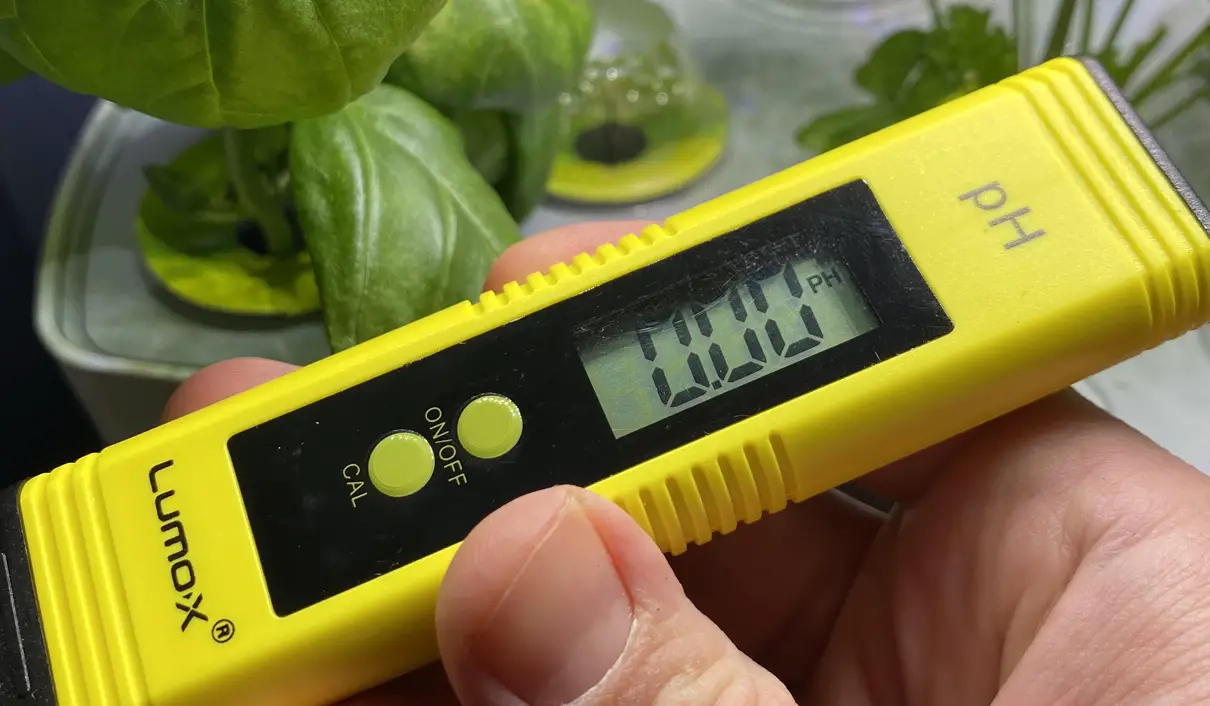
The final important number to watch is the pH of your hydroponic nutrient mix. This reflects how acidic the solution has become during its formulation. The pH of the nutrient solution does two very important things.
Firstly, the pH of your nutrient solution controls how easily the nutrients are absorbed by your plants. Keep the nutrient solution nice and acidic and every nutrient is absorbed by the root system. In an alkaline solution certain elements become ‘stuck’ and can’t be taken up. Nutrients such as zinc and iron are especially hard for plants to access if the pH is out.
The other impact of pH level is disease control. The warm wet conditions inside the rig are an ideal breeding ground for fungal diseases This including the twin hazards of Pythium and Phytopthora. These nasties can’t endure acidic conditions so a low pH gives your your crops substantial protection.
Monitor your solution regularly and adjust the pH level of the water as required. Use an electric pH meter, test strips or a pH test solution to measure the acidity. If you need to change the pH commercial buffer solutions are your best bet. Follow the instructions on the label to the letter or your solution may well wind up going too far in the other direction.
What Nutrients are Required for Hydroponics?
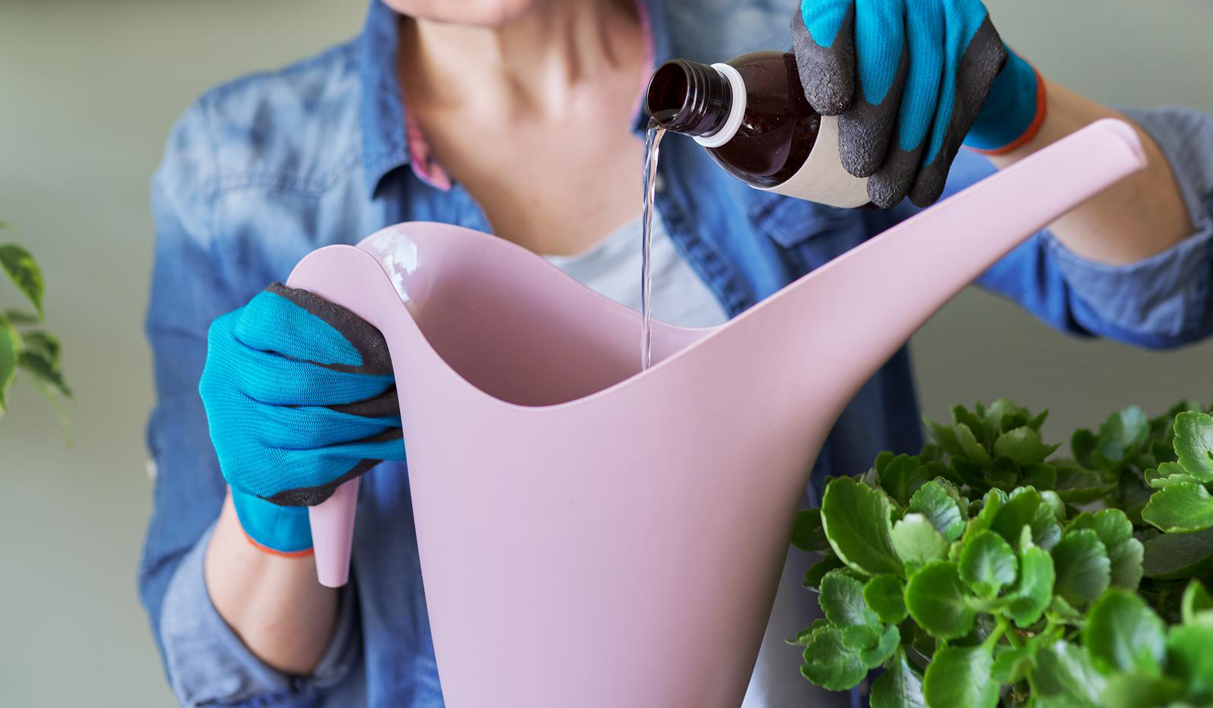
Plants require seventeen different basic elements to grow. Some, like carbon and oxygen, are taken from the air. The rest have to come from the nutrients in your water.
Your solution must contain nitrogen, phosphorous and potassium. These are often called the macro nutrients because they are needed in large quantities by plants continuously. The micro-nutrients are needed in smaller but no less critical amounts. They are calcium, magnesium, sulfur, manganese, iron, molybdenum, copper, zinc, boron, chlorine and nickel.
The amounts of each of the macro and micro nutrients need depends on the crops you are growing. Nightshades like tomatoes and peppers need more calcium and magnesium than others. If you’re boldly growing potatoes in hydro you’ll need a more potassium. You’ll need to prepare your nutrient mix accordingly.
How Much Nutrient Do I Need For Hydroponics?
The quantity of nutrient solution required depends on the size of your system. A single lettuce in a passive setup will go through perhaps a gallon of liquid over the whole season. A massive multi-tier NTF rig will use much more.
Your crops will change how much you need too. That lettuce a lower concentration of the hydroponic blend to hit its preferred EC than broccoli, for example.
Check the capacity of your system, then check the dilution on the bottle. An eight gallon system with low EC crops may only need a cup or so of solution. Nutrient solution manufacturers are usually pretty upfront about how listing the concentrated solution used per gallon on packages and bottles. Once you pick a solution you can work out how much to buy from there.
What is the Best NPK Ratio for hydroponic vegetables?
The NPK of any fertilizer tells us how much it contains of the three most important nutrients plants need. These are nitrogen (N), phosphorus (P) and potassium (K). It’s a ratio that also describes the percentage. An NPK of 10-10-10 tells us the nutrient mix is ten percent by weight nitrogen, phosphorus and potassium.
The nutrient composition for most plants is around 4-1-2 for most of the lifespan of the plant. That’s twice as much potassium as phosphorus, and twice again nitrogen. These essential nutrients cover most of the bases and will promote the growth of leaves, roots and fruit more or less evenly.
What Micro Nutrients Do You Need to Make Your Own Hydroponic Solution?
Getting micro-nutrients into homemade nutrient solutions can be tricky. Sticking to a recipe can help. Established recipes like the Modified Sonneveld Solution asks for nutrient salts that frequently cover multiple target micro-nutrients. This reduces the amount of math you need to crank out before you start to fill out a nutrient tank. Most of the micro nutrients come as salts you’ll need to obtain through specialists. Other components can be acquired from big box retailers.
How often should I add nutrients to my hydroponic system?
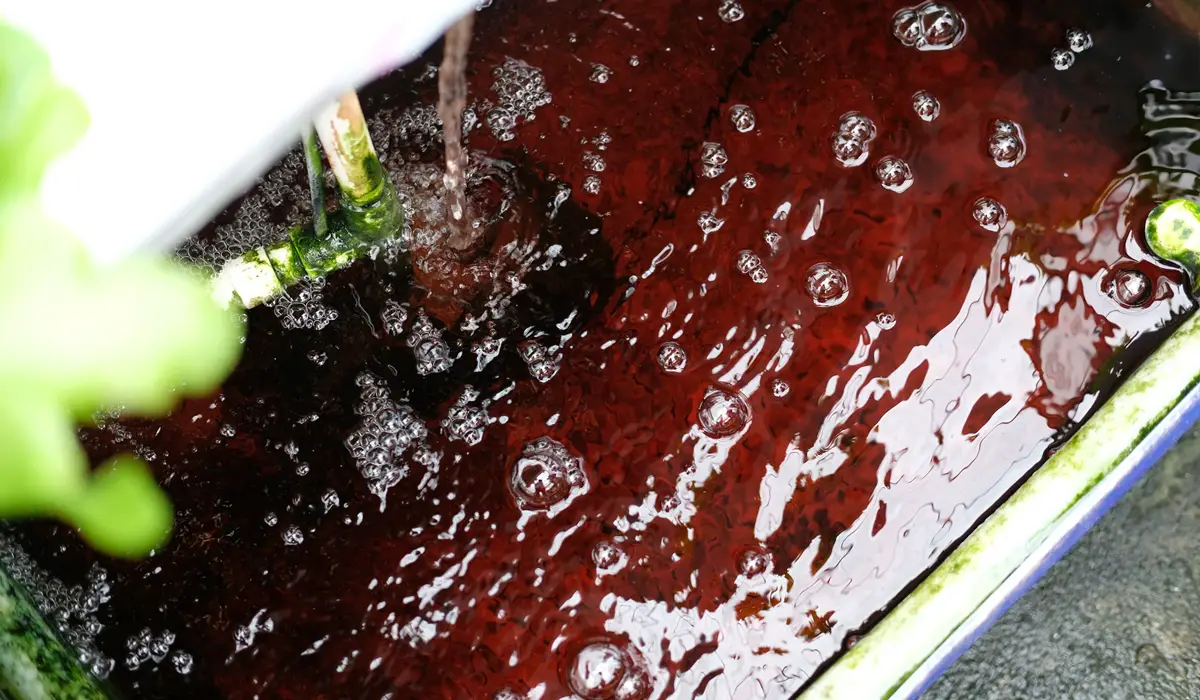
How often you add nutrients to your hydroponics solution will depend on the type of hydroponics system you are using.
Many passive systems only require you to dose them once. Many Deep Water Culture systems, especially non-circulating ones like the Kratky method, don’t require any changed once the box is closed.
Others need more monitoring. Ebb and Flow systems and NFT rigs lose water to evaporation over the course of their use increasing the nutrient concentration. You top up the solution to stop it getting too concentrated and damaging the plants. Conversely if you’re growing outdoors rainfall or dew can dilute the solution and cause nutrient deficiency over time.
Check your solution weekly if you have a circulating system. This means you can evaluate the pH, the water quality and the amounts of nutrients available to support your garden. You’ll be able to spot problems with the solution and adjust the solution to the correct ratios before much harm is done.
Can You Grow Hydroponics Without Nutrients?
While it’s possible to grow hydroponic plants without nutrients you’ll see very limited results. The leaves need nutrients like nitrogen and the roots need phosphorus, and you can pretty much forget about seeing any fruit.
You can skirt around this by using organic media that breaks down over time and releases fertility as it does. Coco coir and peat both contain many nutrients that are required for growth. But this will only get you so far. For reliable results you really do need to feed the plants.
How Long Do Hydroponic Nutrients Last?
Undiluted hydro mix will sit quite happily for six months to a year before they start to degrade. Some may last as long as two years. They won’t rot or become hazardous, but they’ll generally be less effective.
To help prevent your nutrient solution concentrate or components from losing their effectiveness, keep them in a cool, dry location away from direct light. Keep all containers firmly sealed. It’s also worth reading the hydroponic nutrient package. Anything with an out-of-the-ordinary storage requirement will generally list it on the box.
Can I use NPK 20-20-20 for hydroponics?
Powerful fertilizers designed for soil can be hazardous when used in hydroponic growing. While they can be diluted to make a nutrient solution in a pinch they often lack micro-nutrients. They’re also too strong for delicate roots. You’re far better off using a nutrient solution concentrate designed for hydroponics.
That said I’ve read some interesting techniques that use diluted 20-20-20 as a nutrient solution. Potatoes can be grown in a passive systems using perlite and this diluted fertilizer as a fast and dirty way to get water and nutrients to the developing spuds.
How to tell if a hydroponic nutrient solution is organic
When you buy a pre-mixed solution you are getting a carefully calibrated selection of plant nutrients tailored for general hydroponics. This level of precision calls for industrial laboratories and a whole lot of synthetic chemicals. It’s hard to get that effectiveness from organics so most are synthetic.
But there’s two ways to be sure. Check for the Organic Materials Review Institute (OMRI) seal. OMRI is a non-profit organization that checks the contents of liquid fertilizers and ensures they fit the bill. But you’ll need to do some serious looking to find an organic hydroponic nutrient solution. It’s very difficult for high nitrogen fertilizers to meet the standard.
That’s not to say you can’t use organic products in as a supplement to those stronger nutrient synthetics. Kelp products are fantastic to provide a boost to micro-nutrients, especially when applied as a foliar fertilizer.
Final thoughts
When you grow plants within a hydroponic system, you become master of all they have. Whether you build your own or choose between a commercial rig like the Gardyn or the Aerogarden, making the solution and providing the essentials is a whole level of care beyond tilling soil and waiting for rain. When you change how you think about hydroponic nutrient blends and understand it as more than just ‘plant food’ it opens you up to the wonder and beauty of plant biology.
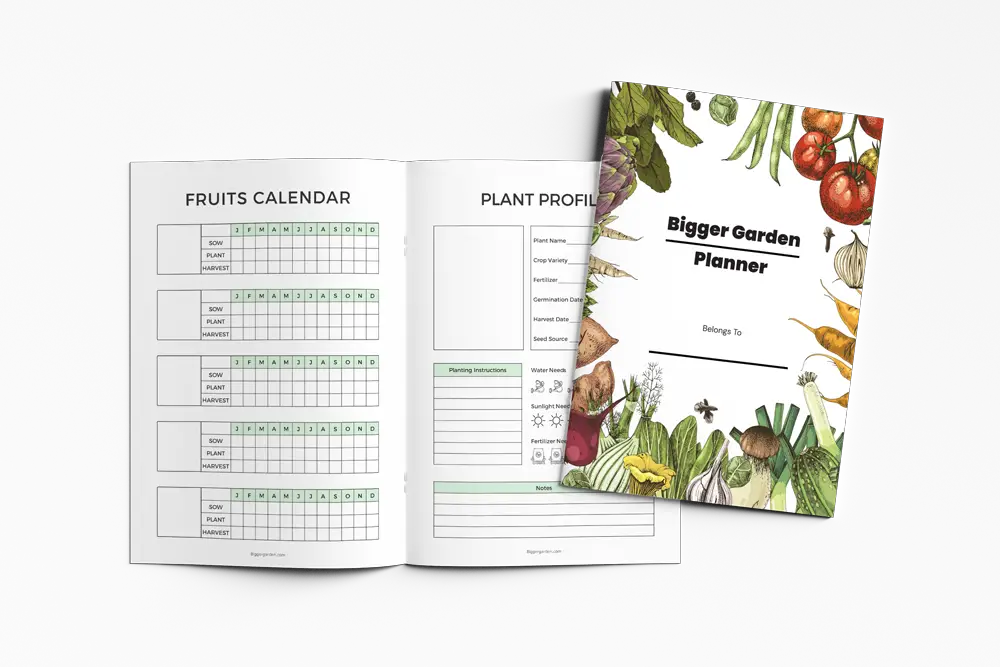
Before you go!
Gardyn Vs. AeroGarden
The Secret to Growing The Best Hydroponic Broccoli
How to Choose a Hydroponic Grow Sponge + Which Ones You Should Avoid…
How to Choose the Best Hydroponic Net Pots for Each Plant or Setup